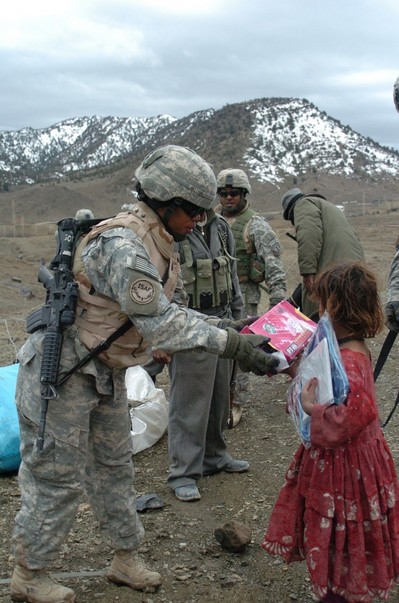
In an impulsive backlash against the warrants issued by the ICC this week, Sudanese President al-Bashir halted the work of 13 relief organizations operating in his country, leaving, “1.1 million people without food, 1.5 million without medical care and more than one million without drinking water.” (Reuters) Sudan is a failed state; the government is unable or unwilling to provide for the basic needs of its people. For many Sudanese the relief agencies are their only source of protection and provisions; millions of Sudanese are now in an extremely vulnerable state. Al-Bashir’s move is the latest in a long list of setbacks for non-governmental relief agencies. The last decade has also seen a drastic rise in attacks on aid workers as they find themselves in increasingly dangerous situations.
To carry out their relief mission, agencies must now deal with threatened authoritarian leaders, as in Sudan, or ideological battles, as in Afghanistan. In the post-9/11 world they are more often working in battlefields, amidst active fighting and conflict. Attacks on aid workers in Somalia and Afghanistan have become so prominent, agencies are pulling workers out of these areas. (NYT) Zimbabwe, Myanmar, and Somalia are just a few of the countries to ban or restrict the work of relief agencies in recent years. Rare is the autocrat who welcomes outside meddling–even in the form of humanitarian aid.
Foreign Aid workers are on the front lines in the global fight against famine, poverty, inequality, and disease. The world is a better place for the work of the Red Cross, Medecins sans Frontieres, Save the Children, and the thousands of other charities providing food, medicine, and education to those who would otherwise go without. Only a decade ago aid workers were relatively safe working in conflict-ridden areas, at the least, they weren’t specifically targeted for violence as is currently the case. Now an aid worker in Sudan, Somalia, or Afghanistan is almost as likely to be attacked as military personnel. The increasingly turbulent environments in which aid workers operate is creating an existential crisis for Relief agencies.
We live in a world of “constant conflict” and those seeking to deliver humanitarian relief must adjust their mission and mode of operation to reflect this. How will they move forward? Some agencies have responded by beefing up security by hiring private security contractors to protect their operations. This could result in an escalation of attacks on aid workers as the distinction between military and civilians working in the field disappears. Some agencies have withdrawn from conflict areas; an option which runs counter to their core mission: aiding the world’s most vulnerable citizens. This also leaves a significant void in the sphere of foreign aid.
Most likely this void would be filled by the UN, which has many more constraints on its operations than the private aid organizations, or worse, the military becomes the new face of relief work. AFRICOM, commonly referred to as the Peace Corp with guns, is a prime example of this. While AFRICOM may have its merits and supporters, there are strong objections (LAT) to this becoming the model moving forward. If teachers, doctors, and agriculture specialists are armed, the peaceful civilians-helping-civilians message of relief work will be compromised or lost altogether. According to the development network InterAction, “the military’s involvement in emergency relief, stabilization and reconstruction can be deeply problematic because of its security focus and lack of specialized expertise.”
The world, especially the developing world, needs private relief organizations to survive and thrive despite the political and violent attacks they are currently facing. They tend to be more nimble, timely, and have less political hang-ups than any other present alternative. It will be interesting to see how they adjust their operations without diluting their mission.
— Faith Smith


11 comments on “The Future of Humanitarian Relief?”